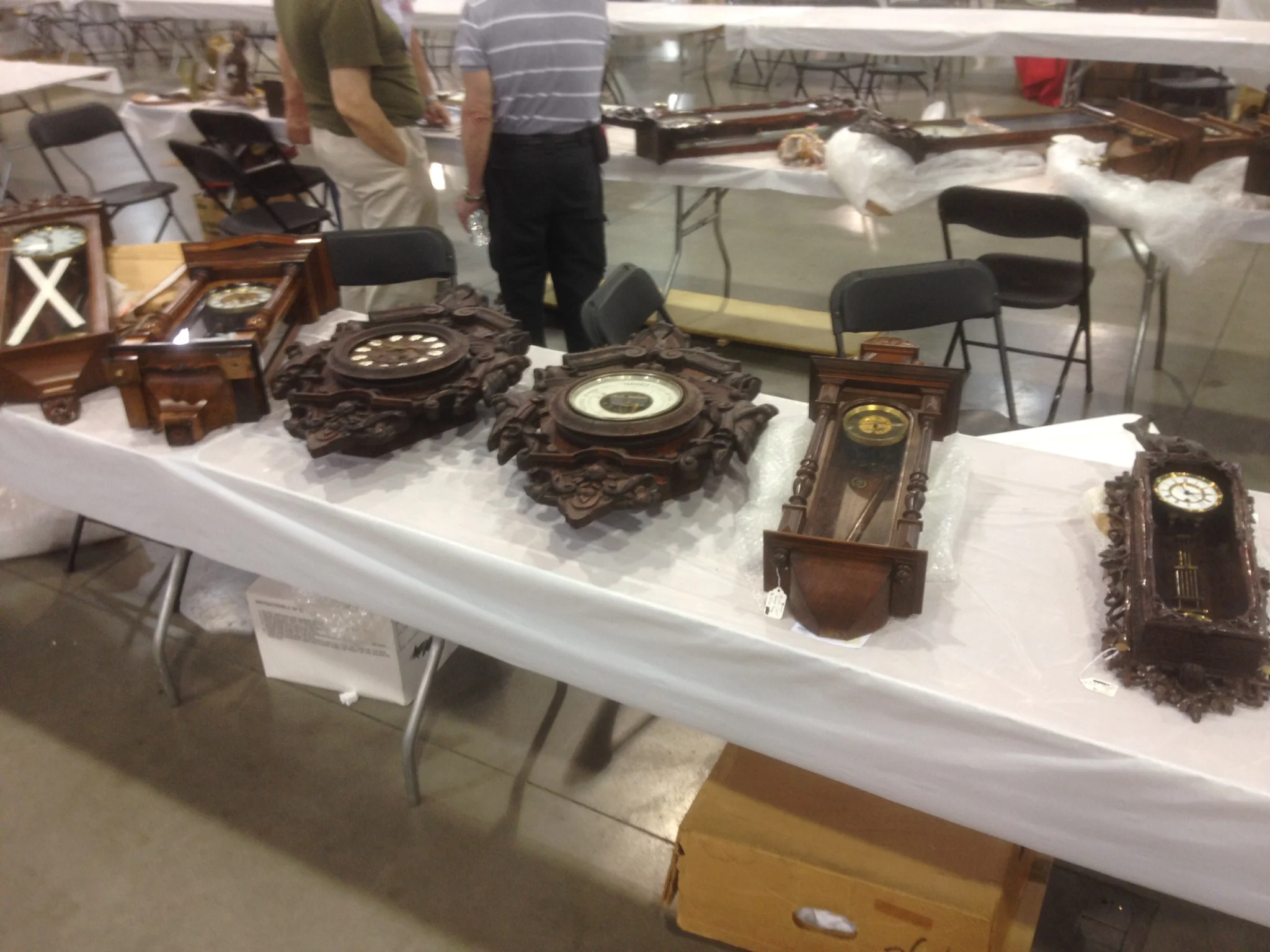DAVE’S CLOCK BLOG - VOL. I
/
Collect the older clocks!
I am a collector of Vienna Regulator clocks.
The Vienna regulator was created about the turn of the 19th century. The earliest dating to about 1790. At this time Austria was aligned with France, and Napoleon had declared himself Emperor of the Roman Catholic Empire. The Empire style architecture and furnishings were in style. We call this the Empire period (about 1800-1835). Architecture displayed straight sided structures with pointed "roofs" (Dach). The laterndluhr and dachluhr style Vienna regulators are generally considered to be from the Empire period, although dachluhrs were made well into the Biedermeier period (1835-1848).
The clocks made before 1850 tended to be simpler than the clocks produced later. The lines of the clocks were finer, casework was narrower, and in general the clocks were more rectilinear than the later, often very ornate styles.
The shape of the Laterndluhr was simplified in the Biedermeier period such that the clock resembled more of a square stacked on a rectangle (Dachluhr). Later still, from about the middle of the Biedermeier to the end of the period, the clocks gained a bit of ornament on the top, and lost the division between the top square and the bottom rectangle
Biedermeier-period clocks make up for their simple cases with the engine turned (early) or piecrust bezels that typically adorned the clocks. Most of the Biedermeier and earlier style cases had lighter colored "satin bandings" around the glass and in other areas that accented the case.
There were more Vienna regulators made in Germany than in Austria. But, since the German factories only began producing clocks after 1850, nearly all of the true Biedermeier and earlier clocks came from Vienna or other clock-making centers like Prague, Linz, or Budapest.
Thus, generally, the clocks made in Germany represent mass production that was the direct result of the industrial revolution. Gustav Becker copied many of the American methods; Lenzkirch copied many of the French methods. Their combined output dwarfed the output of all of the Austrian makers.
The Remember (Gebruder Resch) clocks are Austria’s response to the Industrial Revolution producing very high quality factory clocks--easily on a par with the best clocks out of Germany.
The Austrian clocks reflect the best the old world apprentice system could produce--clocks made by individual makers who put their names on the dial and their best workmanship and attention to detail into the clocks they produced.
SO, after all this background information, my point of discussion is the recent gigantic drop in the value of the later Vienna Regulators. In 1850 there were about 15 thousand clockmakers working in Vienna. Since everything was hand made, they made only a few clocks a year. Let’s say 6/maker. So, there were probably less than 100,000 clocks made a year and certainly not all Vienna Regulators. After 1850, and especially as we approach 1870 there were many more clocks made each year by the growing mass-production factories. We are probably taking of Millions per year vs. our previously mentioned 100K.
After WW2, many of the GI’s found and loved these clocks. They would bring them back and maybe make more clock buying trips to Europe to bring back clocks. They generally paid for their trip and made a few bucks selling the clocks they brought back. Still, the supply here in the USA was pretty limited.
With the advancement of the internet and especially and the rise of eBay, the ease of access to the clocks and the quantity available improved. The clocks made after 1870 just kept coming and coming. Then when the big recession hit in 2009, the values of the later clocks disintegrated. A nice, ca. 1880, two weight Vienna regulator would probably have sold for $2500 in the year 2000. Now, that same clock could probably be had for under $1000. There are just so many of these out there that the value may never come back. There are rare exceptions to this for very unique clocks made after 1850, but these are few and far between.
However, with the very limited quantity made (and then even fewer surviving) of the pre 1850 clocks, most were already in collections and never really hit the eBay type markets. So, the value of these clocks has generally held their own, even in the down economy.
Luckily, when I first started collecting these clocks about 20 years ago a good clock friend advised me to collect the older clocks. He told me “ they only made a few thousand of the early ones, they made millions of the later ones”. Luckily for me, I paid attention and focused on the Biedermeier and older clocks.
That said, anytime you think you know what is going on, it will probably change.
My 2 cents worth for now.
